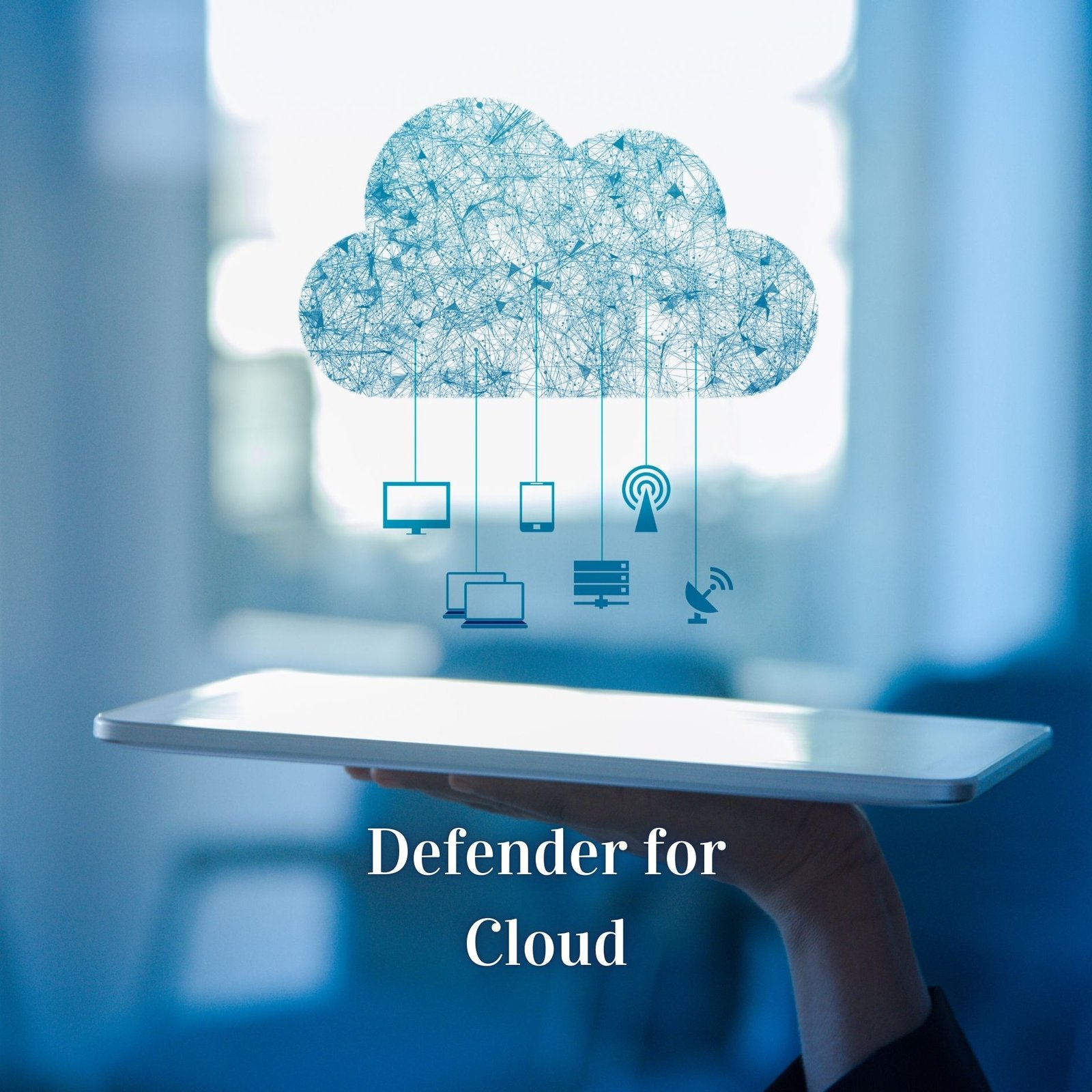Table of Contents
1. Enhanced Threat Detection and Response
In today’s dynamic threat landscape, cyberattacks are not only more frequent but also more sophisticated. One of the most critical aspects of cloud security is the ability to detect and respond to threats in real time. Microsoft Defender for Cloud delivers a robust suite of capabilities to identify threats as they emerge and take immediate action.
Real-time Threat Intelligence
Microsoft’s vast global security network powers a defender for Cloud’s real-time threat intelligence. This network monitors billions of signals daily, including telemetry from Azure, Office 365, and Windows environments. This allows Defender for Cloud to offer unmatched insight into the latest attack vectors, malicious IPs, and emerging threats.
Enterprise IT teams can receive alerts when anomalies occur, such as unexpected login attempts from unusual locations or spikes in outbound traffic. These alerts aren’t just noise; they are enriched with context to help security analysts understand each incident’s severity, origin, and potential impact.
Automated Incident Response
Detection is only half the battle. Defender for Cloud takes it further with automated responses to contain and remediate threats quickly. Think of it as a built-in security team that never sleeps. Defender can isolate affected resources, apply patches, revoke access, or even initiate rollback procedures when a threat is detected.
For example, if ransomware behaviour is detected in a virtual machine, Defender can immediately disconnect it from the network and start automated recovery workflows. This rapid action dramatically reduces the exposure window and prevents lateral movement across the cloud environment.
2. Unified Security Management
Managing security across multiple cloud services and on-premise infrastructure is one of the biggest headaches for modern enterprises. Microsoft Defender for Cloud simplifies this complexity by offering a single-pane-of-glass security management platform.
Centralized Dashboard
No more switching between multiple portals or juggling different security tools. Defender for Cloud offers a centralized dashboard consolidating insights from Azure, AWS, GCP, and hybrid environments. This dashboard provides an at-a-glance overview of your cloud security posture, outstanding alerts, and recommended actions.
Admins can monitor compliance scores, threat levels, misconfigurations, and attack simulations in one place. This not only boosts visibility but enhances decision-making. You don’t have to be a cybersecurity expert to understand the metrics—Defender presents them in a digestible and actionable way.
Multi-Cloud Visibility
Defender for Cloud isn’t limited to Azure. Through its integrations, it seamlessly supports multi-cloud environments. Whether your workloads are running on AWS Lambda, Google Cloud Run, or traditional VMs in Azure, Defender collects telemetry from all of them.
This cross-cloud visibility is a game-changer for enterprises with complex, distributed infrastructures. It allows businesses to standardize their security protocols, identify gaps across platforms, and ensure uniform protection no matter where their data lives.
3. Improved Compliance and Governance
In a world of ever-tightening regulations and data privacy laws, compliance is more than just a checkbox—it’s a business imperative. Defender for Cloud has features that help enterprises confidently navigate regulatory landscapes.
Regulatory Compliance Tools
Defender provides built-in regulatory compliance standards such as ISO 27001, NIST, PCI DSS, and GDPR. It evaluates your cloud resources against these standards and gives you a compliance score. This score reflects your current state and offers guidance on how to improve it.
You can also create custom compliance policies tailored to your specific industry needs. These tools ensure you are always audit-ready and operating within legal and regulatory frameworks.
Audit-Ready Reporting
Let’s be honest—audits can be stressful. But with Defender for Cloud, generating audit-ready reports is a breeze. The platform keeps a detailed log of activities, incidents, remediations, and configuration changes.
These reports can be exported in various formats and shared directly with compliance officers or external auditors. They are a reliable paper trail proving your organization’s commitment to cybersecurity best practices.
4. Advanced Cloud Security Posture Management (CSPM)
Misconfigurations are one of the leading causes of data breaches in cloud environments. Defender for Cloud includes Cloud Security Posture Management tools designed to help you proactively secure your setup.
Risk Assessment Tools
Defender identifies high-risk configurations like open ports, exposed storage buckets, or weak encryption settings through continuous assessments. It flags these vulnerabilities and assigns a severity score so that teams can prioritize what needs to be fixed first.
For example, if a VM is found to be publicly accessible without proper firewall rules, Defender will alert the team with a suggested fix. This real-time feedback loop significantly reduces the chances of security gaps going unnoticed.
Security Recommendations
Defender for Cloud offers remediation guidance beyond pointing out what’s wrong. Each recommendation includes detailed steps to resolve the issue, often including a “Fix Now” button that automates the correction.
These recommendations evolve based on your environment’s behaviour, making them dynamic and highly relevant. Over time, applying these suggestions results in a hardened cloud infrastructure that is resilient against threats.
5. Integration with DevSecOps Workflows
Security is no longer an afterthought—it must be integrated from the start of the development lifecycle. Defender for Cloud is designed to fit right into your DevSecOps practices, ensuring security is embedded from code to deployment.
Secure CI/CD Pipelines
With integrations into tools like GitHub, Azure DevOps, and Jenkins, Defender enables security checks directly within your CI/CD pipelines. This means code can be scanned for vulnerabilities, secrets, and insecure libraries before it hits production.
Such early detection reduces the time and Cost of fixing bugs and ensures that only secure, compliant code gets deployed. Developers get actionable feedback in their environment, minimizing friction and delays.
Automated Policy Enforcement
Imagine being able to block a deployment if it fails a security check automatically. Defender for Cloud makes this possible. It enforces policies across your development workflow, such as implementing data encryption, restricting certain API usage, or ensuring identity controls are in place.
This ensures compliance and fosters a culture of accountability among development teams. Everyone, not just the ops team, becomes responsible for security.
6. Strengthened Identity and Access Management
Identity is the new security perimeter in the cloud era. With increasing users, services, and devices connecting to enterprise systems, managing identity and access control becomes crucial. Defender for Cloud enhances your security by integrating with robust Identity and Access Management (IAM) frameworks to ensure that only the right people access the right resources.
Conditional Access Policies
Conditional access is a powerful way to enforce security without interrupting productivity. Defender for Cloud’s integration into Azure Active Directory allows you to create context-aware access policies. For instance, access to sensitive data can be restricted unless the user is on a corporate device, within a specific region, or meets multi-factor authentication (MFA) requirements.
This approach allows businesses to strike a balance between usability and security. Defender can even detect and respond to suspicious sign-in attempts, like a user trying to log in from two countries simultaneously—flagging it immediately and triggering predefined responses.
Role-Based Access Control (RBAC)
Another crucial feature is granular access control through RBAC. Defender for Cloud allows you to define roles and assign permissions based on job responsibilities. For example, a database administrator may access database configurations but not network settings.
This reduces the attack surface by implementing the principle of least privilege, ensuring users only have access to what they need. RBAC also simplifies audits and access reviews, making spotting over-privileged accounts or dormant credentials easier.
7. Proactive Risk Management
Waiting for an attack to happen before reacting is a dangerous game. With Defender for Cloud, enterprises can proactively anticipate and mitigate risks before they become full-blown security incidents.
Threat Modeling and Attack Path Analysis
One of the standout features is its ability to conduct attack path analysis. Defender identifies how a threat actor could move laterally through your cloud environment. It maps out these paths visually, helping you understand which configurations or permissions could be exploited.
Think of this as your enterprise’s security blueprint—it shows you where the weak links are and what an attacker’s roadmap might look like. Armed with this information, you can take preventive action to close off those paths before they’re exploited.
Anomaly Detection
Defender for Cloud continuously learns what “normal” activity looks like in your environment using machine learning and behaviour analytics. When something strays from the norm—like a sudden spike in outbound data traffic or access to resources at odd hours—it raises an alert.
These anomalies are prioritized by risk severity and presented with recommendations so you’re not overwhelmed with noise. This way, you can focus on what matters most and catch threats before they cause damage.
8. Cost Efficiency and ROI
Cybersecurity is often seen as a cost centre, but Defender for Cloud turns it into an investment. It delivers tangible returns by reducing the risk of costly data breaches, streamlining security operations, and eliminating the need for multiple third-party tools.
Reducing Security Breach Costs
According to IBM’s annual Cost of a Data Breach report, the average breach costs over $4 million. Defender helps you avoid this massive expense by detecting and responding to threats early, often before they reach critical stages.
Identifying misconfigurations and risky user behaviour in advance minimizes the likelihood of a successful attack. When breaches occur, their automated responses significantly limit their scope and impact.
Lowering Manual Security Operations
Defender for Cloud automates much of the manual work that requires a complete security operations team. From threat detection to policy enforcement, it reduces the need for human intervention without sacrificing control.
This lowers operational costs and frees your internal IT staff to focus on strategic initiatives rather than firefighting. You can also consolidate multiple security tools into this platform, saving on licensing and maintenance fees.
9. Native Integration with Azure Services
For enterprises already invested in Microsoft’s ecosystem, Defender for Cloud offers native integration that enhances usability and effectiveness. Unlike bolt-on tools, it works with Azure’s architecture, delivering a seamless experience.
Seamless Experience for Azure Users
Defender for Cloud is built into the Azure portal, so there’s no need to jump between platforms or install additional agents for many core services. Whether you’re provisioning a new VM or configuring storage, Defender automatically starts monitoring and providing security recommendations.
You also benefit from the auto-provisioning of monitoring agents, saving time and effort during deployment. It integrates with Azure Policy, Monitor, and Log Analytics for a unified, streamlined experience.
Synergistic Tools and Services
Another huge advantage is its synergy with other Microsoft security products, such as Microsoft Sentinel for SIEM, Microsoft Entra for identity management, and Microsoft Purview for data governance.
Together, they form a cohesive ecosystem that amplifies each tool’s capabilities. Defender doesn’t just add security—it acts as a force multiplier, ensuring all your Azure services work securely and efficiently.
10. Comprehensive Workload Protection
In a modern enterprise, workloads are spread across virtual machines, containers, serverless apps, and more. Defender for Cloud doesn’t just focus on one type—it offers broad protection across all workload types.
VM and Container Security
Virtual machines and containers are often targeted due to their high utilization in production. Defender continuously scans these environments for vulnerabilities, outdated libraries, and misconfigurations.
It also provides runtime protection—monitoring for malicious behaviours like suspicious process execution or privilege escalation attempts. For containers, it supports Kubernetes workloads and integrates with AKS (Azure Kubernetes Service) for policy enforcement and image scanning.
Serverless and Application Security
Serverless platforms like Azure Functions and AWS Lambda are fast and flexible, but unfortunately, they are often forgotten in security planning. Defender for Cloud ensures these are not weak spots by offering code-level security scans, behaviour analytics, and input validation.
It can also assess your APIs and web apps for OWASP Top 10 vulnerabilities, giving you comprehensive coverage across the entire app lifecycle—from code commit to runtime protection.
11. Enhanced Visibility Across Hybrid Environments
Enterprises rarely operate in a single cloud or platform. Most modern businesses use a mix of on-premises systems, multiple cloud providers, and SaaS applications. Defender for Cloud offers unified visibility across these diverse environments in this context.
On-Prem and Cloud Environment Coverage
Defender extends its reach beyond Azure, supporting on-prem infrastructure and other cloud platforms like AWS and Google Cloud. Whether you’re running legacy workloads in your data centre or leveraging cutting-edge PaaS services in the Cloud, Defender ensures none of your assets is left unmonitored.
Through Azure Arc integration, even on-premises VMs and Kubernetes clusters can be brought into Defender’s monitoring framework. This eliminates blind spots and offers consistent protection regardless of where your workloads reside.
Unified Insights and Alerts
With Defender for Cloud, you get a centralized view of alerts and insights, eliminating the chaos of managing multiple monitoring tools. You can track threats, policy violations, and compliance issues across your hybrid infrastructure from one place.
Security recommendations, performance metrics, and compliance reports are unified, giving your security team a single source of truth. This reduces the complexity of managing security and improves operational efficiency.
12. Scalability and Flexibility
As your business grows, so do your security needs. Defender for Cloud is designed to scale effortlessly with your enterprise, providing the flexibility to adapt to changing infrastructure and increasing workloads.
Adapting to Business Growth
Whether you’re onboarding new teams, expanding into new regions, or adopting new technologies, Defender adjusts without skipping a beat. Its modular design allows you to pick and choose the services you need—so you’re never paying for unnecessary features.
Moreover, because it’s a cloud-native solution, there’s no need to worry about infrastructure constraints or software limits. Defender grows with your business and evolves with the changing security landscape.
Supporting Multi-Region Deployments
Operating across regions or continents? No problem. Defender supports multi-region and multi-cloud deployments, ensuring consistent policy enforcement and security controls across your global footprint.
Its integration with global compliance standards also ensures that your deployments in various regulatory environments remain compliant without additional configuration. This makes global scaling not just possible but also secure and streamlined.
13. Continuous Improvement Through AI and ML
The cyber threat landscape changes daily. Static tools can’t keep up—but Defender for Cloud leverages Artificial Intelligence (AI) and Machine Learning (ML) to stay ahead of threats and continuously improve security.
Adaptive Learning Systems
Defender isn’t a one-and-done tool. It learns from your environment over time, adapting to changes in user behaviour, traffic patterns, and system configurations. This allows it to detect new anomalies with increasing accuracy, reducing false positives and improving detection rates.
Studying millions of security signals daily builds a constantly evolving understanding of threat indicators, making them more responsive and intelligent with each passing day.
Predictive Threat Analysis
Instead of reacting to incidents, Defender uses predictive analytics to identify potential threats before they materialize. It can detect behaviors and patterns that are precursors to attacks—like lateral movement or privilege escalation attempts—and alert your team before damage is done.
This forward-looking capability transforms Defender from a traditional security tool into a true cybersecurity ally—one that constantly innovates to keep your enterprise one step ahead of attackers.
Conclusion
Modern enterprises face various security challenges, from increasingly complex IT environments to a constant barrage of sophisticated threats. Microsoft Defender for Cloud meets these challenges head-on, offering a comprehensive, scalable, and intelligent solution beyond traditional security tools.
Its ability to provide real-time threat detection, seamless integration, deep visibility, proactive risk management, and AI-driven insights makes it a standout choice for organizations looking to secure their digital assets and ensure compliance in a cloud-first world.
By investing in Defender for Cloud, businesses are not just buying a security platform but embracing a proactive, unified, and intelligent defence system tailored for the modern age.









